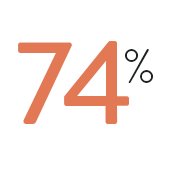Reporting
“Truth is what the perpetrator most fears.”
– Judith L. Herman (psychiatrist and researcher)

Around 10% of sexual assault victims report to the police.

1 in 4 women do not report their assault because they feel ashamed.

74% of women do not perceive their assault as a crime at the time, and 22% perceive their assault as something that ‘just happens’.
Unlike what we learnt on Law and Order SVU, there is generally no time limit for reporting sexual crimes in Australia. Of sexual assaults reported between 2014 and 2019, the majority were reports of an incident that occurred over a year ago (ABS, 2021). As for child sexual abuse, the average time taken to report is 20 years (Royal Commission, 2017). However, the sooner you report the better, as police have a greater chance of securing important evidence.
You do not have to report to receive support.
You can decide which police station to report to, although it will be convenient for you to report locally. Some police officers encourage you to report at the station closest to where your assault took place, as that station is usually given carriage over your investigation after your statement has been given. However, this is unpredictable, so it’s best to report wherever you feel comfortable. If you are in a state with a designated sexual offence investigation team for sex crimes where the perpetrator is known to the victim, there may be specific police stations that house those specialised investigating officers, so you might choose to go to one such station near you or near where the crime occurred.
If your assault occurred in another state, you can report to your local police station first, and your information will subsequently be forwarded to the police force in that state. Wherever you report, you should be prepared for the rotation of officers into and out of your space, as the investigating officer is not finalised until your investigation begins. This can feel unfair, but it is important not to get too attached to anyone you report with early on.

Find your local police stations here:
Search by postcode, suburb or police region map to find your local police station. Search returns include contact details of your local police station.
Reporting Process
Click on the tabs below to view the steps involved in reporting
First Steps
Approaching a police station can be confronting. To feel more in control, you may find comfort in calling the station prior to your arrival. Request to speak to the duty officer – they can tell you the name of their investigating officer and tell them that you are coming to the station. That way, whenever you arrive at reception, you can ask for the investigating officer without needing to explain yourself. If you are in a state with a designated sexual offence investigation team, the duty officer can notify a specialised investigating officer that you are coming to the station. If you prefer, you can request to speak with a female detective. A female detective may not be on duty or on call, so you might arrange a time to meet.
The investigating officer will meet you at reception, and lead you to a private room.
Police require you to give an overview of what happened before asking if you want to make a statement. You do not have to participate in either process alone. For your initial overview report, you can take anyone with you for support, however, for your statement, the person you choose to sit with you must not be giving evidence themselves. This may be difficult to predict, so try to pick someone that was not involved with your assault or its aftermath (e.g family, friends you may have disclosed to). Even taking a counsellor or sexual assault support worker can have ramifications for a potential trial later on.
If you are unsure about giving a statement, start by providing an overview of your assault so that there is a summary of the event on record. You can leave with your unique event number and will not be contacted by police further, but can return at any point to make a statement and start with that same overview.
Forensic Examination Kit
If you are reporting within 7 days of your assault, police may request that you complete a Sexual Assault Investigation Kit (SAIK) / Medical Examination Kit (MEK) / Forensic Medical Examination (FME) to try to secure forensic evidence. The examination will be undertaken at a hospital with a specialist sexual assault service that is independent of the police, and the police can take you there.
You do not have to report to police to have an examination; you can call your local sexual assault service to receive health care and counselling, and to discuss your options for a Kit. You do not have to use your legal name at a sexual assault service.
If you are undecided about completing an examination, depending on the type of assault, forensic evidence may be able to be preserved for some time (e.g. by storing the clothes you were wearing unwashed in a paper bag).
If a specialist is not available, which may occur from time to time in remote places, you may be able to complete an early evidence collection kit. This allows you to self-collect some evidence in the interim. Most states offer early evidence self-collection as an alternative to a forensic examination, even when an examination is possible.
If you decide to have an examination, it will involve recounting a brief history of what happened to help guide the examination, and may then involve taking DNA swabs, documenting and photographing any injuries, blood and urine tests and collecting clothing from the event. The examination will typically involve touching or inspecting of your genitals. You can say ‘no’ to any part of the procedure. A sexual assault counsellor or a support person can be with you for the entirety of the examination.
The sexual assault service will offer you emergency contraception if required and discuss any concerns about STIs, offering testing and treatment as needed. They can also provide a ‘sick certificate’ for school or work, and will arrange follow up care, including counselling. It is okay for you to request a male or a female practitioner, however there may not always be a male or female available. It is also okay for you to request a different practitioner, if the practitioner is making you uncomfortable in any way, for example not using gender-affirming language. However, once again, remember that there may not always be another practitioner available.
Once completed, you will be asked to give signed consent to enable the Kit to be released to police for analysis. However, if you are under the age of 16, any samples you agree to have taken will automatically be released to police. Alternatively, if you are over the age of 16, you may choose for the sexual assault service to store your kit until you decide what to do – this is common. Note that if you complete a Kit prior to reporting to police, you still need to make an official statement for an investigation to be initiated using your Kit. If you choose for your Kit not to be given to police, it will be destroyed by the sexual assault service after three months.
Remember, sexual assault services are available to you even if you don’t want to report to police, and even if you do not want to complete a Kit, or if you are undecided.
Statement
The time taken to make a statement is different for every victim. Some people quote five hours, others much longer. This is dependent on a range of factors, including your relationship to the perpetrator and your ability to recount the details of your assault/s. When we say the details, we mean it. As well as being asked where, when and how, you will be asked to provide details that may be difficult to remember, such as how long each body part was where, what level of force was used and what you were thinking and feeling during each second of your assault. You may be asked to draw a diagram of the space where the assault took place. The investigating officer might ask you about your level of intoxication, as well as what you were wearing – they might ask the same questions about the perpetrator. These questions are used to paint a detailed picture. Describing your level of intoxication can provide information about how and why the perpetrator chose to assault you. It is important that you are honest about any other drugs involved – you will not get into trouble for underage drinking or using illicit substances.
The process is challenging, because every detail counts in creating a case against the perpetrator. Remember that it is your right to break or even stop at any time, and if you are being made to feel uncomfortable, trust your intuition and ask if you can talk to someone else. You may split your retelling over several days should it work better for you. The goal is to give your evidence clearly and calmly, so you should do whatever you need to make yourself comfortable.
It is often said that giving a statement is re-traumatising – this is not just because you are required to recount your assault, but because you may feel like your agency is taken away, just like it was when you were assaulted. Unless you are in a state where your statement can be recorded, someone else must type what you say, and this can be incredibly frustrating. You will often need to stop to assist with menial tasks such as spelling. You will have sentences repeated back to you over and over for your approval before you can move on. It can feel disempowering to have someone break your story up in this way. Nothing you say is permanent, there is plenty of time to edit and review your statement as you go and at the end. Remember, the statement is written in your words, and while you may have to wait to rearrange or confirm them, this is your story.
Your statement is presented in sections – section ‘b’ line ’12’, or ‘paragraph 1’. When you are satisfied with your statement, you will review it before signing and dating each page. The investigating officer will do the same. This officially begins your investigation. If you remember something else later on, or want to clarify a section of your statement, you can complete another, smaller, statement that will refer to the section you are ‘editing’.
Even if nothing happens from here, your report is an enormous accomplishment. You have told your story, and in doing so joined the 10% of victims who report their sexual assault in an attempt to hold perpetrators accountable. Just registering a perpetrator’s name can make a difference.
For your consideration:
If you choose not to make a statement, it is worth considering whether you would like to be contacted should another victim name the same perpetrator. If you give consent for police to contact you under these circumstances, you may find emotional encouragement to make a formal statement, or provide emotional encouragement to the other victim/s.

Personal Reporting Timelines:
G reported 4 days after her assault, and her statement was completed the same day.
S reported 2 months after her assault, and her statement started 3 months later and was completed over 7 weeks.
A reported 3 months after her most recent assault. She started her statement the same day, and it was completed over 4 weeks. She made additional statements 1 year and 2 years later.